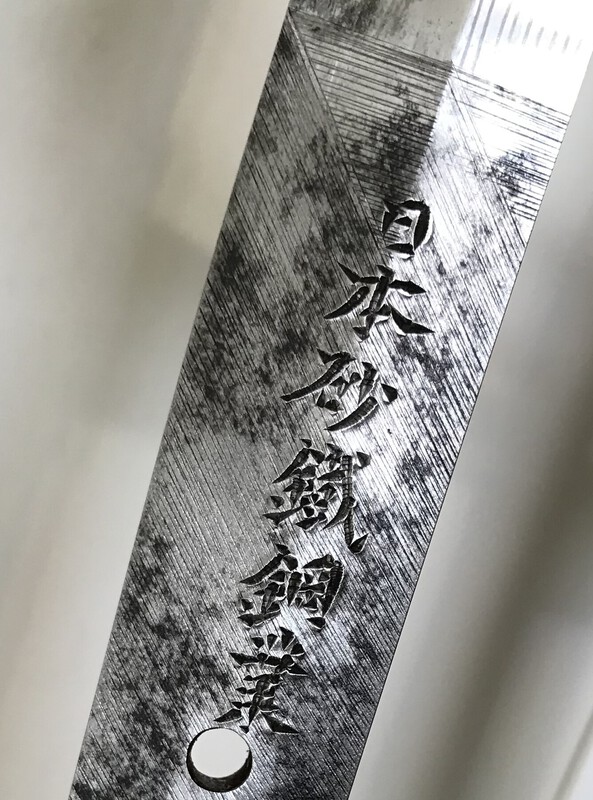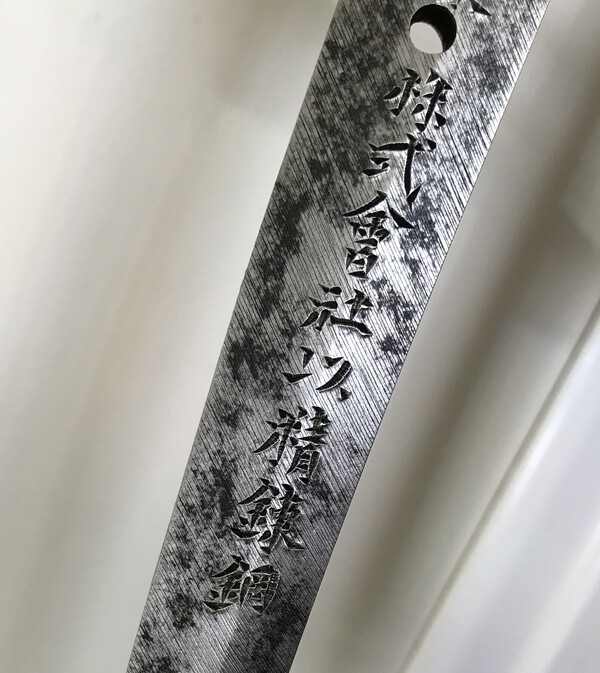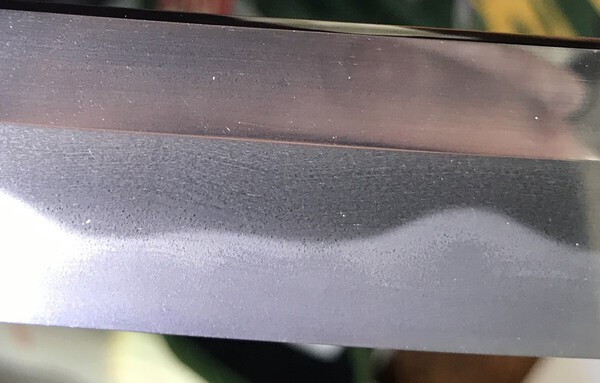-
Posts
705 -
Joined
-
Last visited
-
Days Won
12
Content Type
Profiles
Forums
Events
Store
Downloads
Gallery
Everything posted by Bryce
-
G'day Guys, Gassan Sadakatsu swords are sometimes found with the inscription : "Nihon Satetsu Kogyo Kabushiki-gaisha Motte Seiren Ko" I think his translates roughly to " Made using steel smelted by the Japan Iron Sand Steel Industry Company". If I have got this wrong, please correct me. The Japan Iron Sand Steel Industry Company made sponge iron from iron sand using rotary kilns, after first treating the sand to recover vanadium. They were established around 1937 and were listed by the US Airforce as a bombing target during the war. Before I started researching this company I had assumed they made tamahagane, but it now seems they made western steel, using iron sand as the base ore. The question is why did Gassan Sadakatsu make these swords? The most likely explanation is that the company commissioned him to make a batch of these swords, so they could be presented to important people to promote the company's product. A less likely scenario is that Gassan Sadakatsu was endorsing their product because of its quality. So far I have identified seven of these swords, five made in 1940 and two made in 1941. Three of these are kogarasu maru and four are shinogi zukuri, with and without bohi. They are also made in ayasugi, masame and soshu style. Below is an example made in 1940 in masame. Cheers, Bryce
-
Thanks John, Here is the sugata. It seems to be pretty standard for most of Gassan Sadakatsu's blades during this period. Nagasa 68.5cm Sori 2.2cm Cheers, Bryce
-
G'day Guys, Here is a 1940 Gassan Sadakatsu made from steel smelted by the Japan Iron Sand Steel Industry Company. On the katana-mei/tachi-mei subject, the split seems to be about 60/40 and does seem to be almost random. Cheers, Bryce
-
-
G'day John, That is a beautiful sword with fantastic provenance. Very jealous. Cheers, Bryce
-
G'day Guys, Just to put some perspective on this, the sori of the British 1803 sabres I posted is 9.5 cm on an 81cm blade. This is the first time I have actually measured the curve on a European blade. It isn't something you ever see quoted anywhere. Cheers, Bryce
-
G'day Guys, Plenty of swords from other cultures have at least this much curve. You can find examples designed for both mounted use and on foot. Personally I like it. Here are a couple of British 1803 pattern infantry officer sabres from about 1810. Cheers, Bryce
-
G'day Toni, Mon on the fuchi are less common, but not uncommon. Here is one of mine. In your photo it appears that a new mekugi-ana may have been recently drilled in the nakago. If this is the one being used it may indicate that this koshirae has been recently paired with this blade. Cheers, Bryce
-
G'day Guys, Unfortunately I can't add any photos of a Gassan blade to this discussion, but I have been looking at Gassan Sadakatsu blades online. I have noticed that there is an almost 50/50 split between Gassan Sadakatsu blades signed katana-mei and tachi-mei. Is this just a random thing or is there a reason behind why he would choose to sign katana-mei or tachi-mei? Cheers, Bryce
-
G'day Guys, So far I have done a random survey of 83 gunto on the internet where the photos are clear enough to determine type and chuso and the results are that 95% of type 94's have a central chuso and 90% of type 98's have an offset chuso. Not definitive by a long way, but there is certainly a strong trend. Cheers, Bryce
-
G'day Neil, Beautiful sword! Are you sure it wasn't made in Showa 8, 1933? Cheers, Bryce
-
Thanks guys, So no hard and fast rules. How about we do a survey? In my small collection I have 2 * 94's , both with central chusos and 4 * 98's , all with offset chusos. Cheers, Bryce
-
G'day Guys, I was thinking today about the differences between type 94 and 98 shin gunto. Most type 94's I have seen have a centrally located chuso, while type 98's have an offset one. Do you ever find type 98's with the central chuso? Cheers, Bryce
-

katana No idea about the sword I have
Bryce replied to Dave Harro Harrison's topic in Military Swords of Japan
G'day Dave, John Grasso is a terrific bloke. He is very helpful, has some amazing swords for sale and probably has some gunto bits and pieces laying around he can help you with. Cheers, Bryce -
G'day Bruce, I don't know what it represents, but this is the classic "Gassan" habaki which is used by the Gassan family. I would love to own one of these some day (and matching blade of course!). Cheers, Bryce
-

katana No idea about the sword I have
Bryce replied to Dave Harro Harrison's topic in Military Swords of Japan
G'day Dave, I think you are missing the koiguchi from the mouth of the scabbard rather than the kojiri. Here is a shot of one of mine. Are you the radio guy from 4TO? Good to have another North Queenslander on board. Cheers, Bryce -
G'day Paul, Is this the famous Awataguchi nashiji hada? Cheers, Bryce
-
-
G'day Guys, Here are some more photos. The koshirae is in almost pristine condition. The saya is the lacquered wood kind which I think is quite rare. What makes this sword really stand out is the beautiful, two piece, gold and silver foiled habaki. Unusually the fittings which are the mid-war type, are not numbered or marked in any way. The boshi is ichimai style with a long kaeri. The only down side is the blade is suriage and machi okuri. Cheers, Bryce
-
G'day Guys, I was lucky enough to acquire this sword recently. It is a nice sword in its own right, but it also came with some interesting provenance. Allegedly it was once owned by a Japanese army officer by the name of Zenzaburo Ishizuka. This Nobuyoshi blade was handed down to him from his father. When he went off to war, he left this one at home and took a showato with him instead. When he surrendered to American forces in the Philippines at the end of the war, he handed over the showato, while this sword remained safe with his family. The Nobuyoshi sword was never surrendered and remained with his family until it was sold. This explains the pristine condition of the koshirae. Unfortunately I don't have any real proof that this story is true. I thought I would share this story because it gives some insight into how the gunto that we love, ended up where they did. I imagine I would have done the same thing, saved the treasured family sword for special occasions and taken a less expensive showato into the field. Cheers, Bryce
































